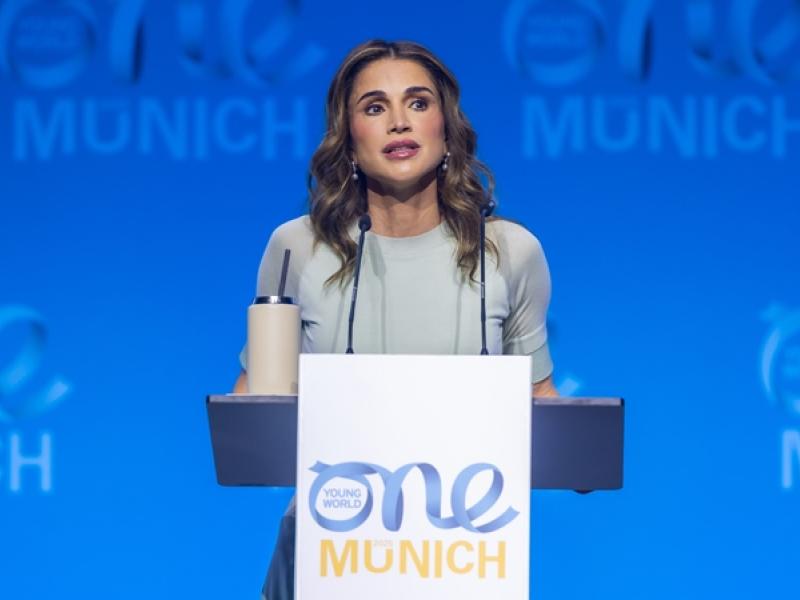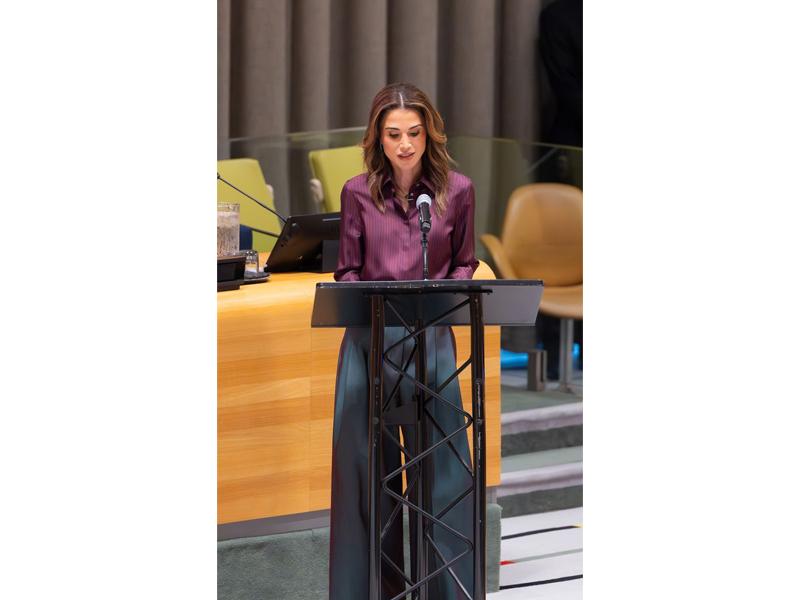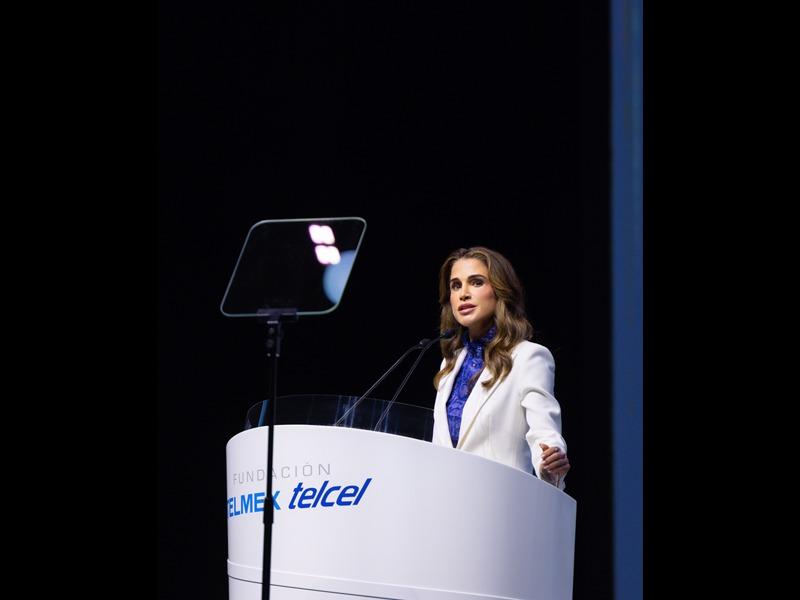Ambassador William Rugh,
Mr. Abdelaziz Meziane Belfqih,
Ladies and Gentlemen,
Thank you for your warm welcome. I am greatly honored to join you today.
With this summit, AMIDEAST celebrates 50-plus years of achievement. I cannot count the number of my friends and colleagues who have been touched by the organization’s work. Nor can I think of a single major American university that has not benefited from the Arab students whom AMIDEAST has helped to study in the United States. AMIDEAST has been a bridge of understanding between cultures and peoples – the truest kind of education there is.
Never has this bridge been needed more than in the past six months. Today, we realize that what we do not know about each other really can become our enemy. Sadly, we’ve seen how ignorance can destroy our world.
At this critical moment, the Arab World and the United States benefit from people with a history of real interaction…people who bridge the divides…and bring true concern and mutual respect to the conversation. In other words, people like so many of you. I hope you will take special pride in your work, and for all our sakes, continue it.
We are here today to talk about education in the Arab World. If this event was timely before, it is even more urgent now given the very difficult conditions we are living in. But we will waste precious time if all we do is simply talk about how important education is. We must dig deeper, think harder. We must grasp today’s unprecedented opportunities…to empower and inspire our children…to help them become full participants in global development…to give them the tools to shape their world.
Today, I’d like to suggest that our greatest challenge is not the digital divide, or the technology gap, or disparities between developed and developing nations. It is not religious or political factions that foment hatred and violence.
Our greatest challenge is something that lies beneath all these dangers and others. It is the “hope gap”…a gap that separates the world’s people, from the earliest age, into those who have a future, and those who do not.
The hope gap opens when our very youngest are denied what they need to thrive and learn: health, basic nutrition…and mothers who themselves are literate and can pass that value along.
The hope gap widens when schoolchildren don’t have the books, technology, and support they need – including teachers who have been trained in the latest knowledge.
The hope gap is even there for students who manage to reach college or university, but are unprepared for anything but rote learning…instead of the critical thinking and analysis that advanced study demands.
By adulthood, the hope gap has become a chasm…into which fall the futures of individual, family, community, and nation alike.
Today, our governments must spend vast sums and energies to find “the long way around” this abyss. But assembled in this room are people who can help find a better way…by closing the hope gap and setting our children on a straight path to success.
We can do that, I believe, if and only if we take advantage of what we have learned about achieving success.
First, we have learned that we must work together – and be flexible and creative in forging strong, public-private partnerships.
Experience shows that change is faster and deeper when we take advantage of the unique resources of all our institutions. Coordination, outreach, logistics – these skills drive success for business and NGOs. We must put these engines to work for our educational systems as well.
We must also tap into the resources of the private sector and international community. For the private sector, education is an investment that wise business leaders know they must make, to have the skilled workforce and prosperous consumers they need. For the international community, informed, thinking citizens, in every nation, are the only guarantee of world peace and progress.
A second truth we have learned about successful action is that information technology is a powerful “force-multiplier.”
Computer skills are not just something we want our children to learn. They are tools for learning itself – a way to leverage knowledge across our school systems and curricula.
The power of technology to leverage and speed progress has been proven time and again. In UNDP’s 2001 report on new technologies, we read how breakthroughs of recent decades helped today’s developing countries solve problems far faster than the developed countries did before them. It took 1,000 years for England to learn enough to quadruple its wheat yields; in contrast, thanks to modern agricultural technologies, world cereal output doubled in just 40 years.
Information technology will allow us to make the same kind of quantum leaps in learning.
Consider the Internet…with its instant, universal access to knowledge. A simple click connects rural and urban, middle-class and poor, with teachers and vast databases. Computer learning can be tailored to the special strengths and needs of different students…adapting to different learning skills and different languages – a yet, at the same time, standardizing the quality of delivery across different spectrums of society.
Indeed, it is astounding how fast computers are already speeding learning. Not that long ago, in one of Jordan’s new community tech centers, I watched this in action. One little boy was at the keyboard and all his friends were clustered around him, pointing out faster and better ways to do his search. These were children who just a short time before had never seen a computer. At other community centers, I talked to women who were using the computers to finish their schooling. Others were learning management skills to run small businesses. These were women for whom “high tech” was once a different world.
Sharing knowledge builds knowledge. It’s that simple.
His Majesty King Abdullah’s commitment to closing the hope gap in Jordan has lead to an ambitious national effort to make use of technology for comprehensive human development. Among other steps, we are computerizing every school in the nation, both primary and secondary. English, the universal IT language, is now part of the curriculum from grade one. Computer education begins in grade two. We are investing strongly in teacher training: Last summer alone, we doubled the number of computer-literate teachers.
We have also started opening the new, community-based technology centers that I mentioned visiting. These are centers that bring the power of computer learning and the Internet to isolated and less-privileged communities.
I know that some critics argue that technology is wasted on the underprivileged. In their eyes, we ought to stick to meeting minimal, basic needs, such as higher wages, food on the table and better shelter. I must emphatically disagree. More and more, access to tomorrow’s opportunities demands technology skills, especially for the young.
That’s important to people, as individuals. But it is just as important to the Arab World as a whole.
In Jordan, as in so many other Arab countries, youth skills translate directly into national capability. Two of every five Jordanians is younger than 14. Almost one in three Jordanians is enrolled in school – and we expect to add 130,000 new students each year for the next two decades. Even our teachers are young: almost 40 percent are under the age of 30.
So, reaching our youth really means reaching all – and technology has a central part to play.
Yet, in order for technology to reach its full potential, we need to do more than invest in getting the technology into students’ hands. Educational professionals must develop the software, training tools – and mindset – to help us use technology effectively.
We must start asking ourselves tough questions, like:
How can we put the power of technology into reducing disparities in education?
What are the best ways to change the culture of learning…to strike a balance between rote learning and critical thinking…between the old “3 R’s” and new, analytical skills?
Are there better ways to help teachers keep current--not only with new technology skills, but with the rapid growth of knowledge?
As we think about these and other aspects of innovation, we must also think about fundamentals. That brings me to a third thing that education can learn from success in other fields – which is to take advantage of your strengths.
The Arab World has many assets. One of the greatest is our unique, rich culture of learning.
It is not an accident that the history of science and technology began in the Middle East and Arab World. Ours is a civilization with deep roots in education. No society has paid greater honor to the scholar. Our respect for learning has produced generations of discoverers, scientists, and thinkers.
New technology, global communication, world trade – none of these supercedes our traditions and history. On the contrary. Global life is richer by what our countries bring to it--our strong heritage, culture and religion. A blend of these ingredients and today’s attributes will provide our children with a guiding formula in the age-old struggle of defining their identity.
Here in the Arab World, we need to turn to each other in support and strength, as we tackle the challenges of the future. Our nations have made real progress in the last decades. Primary school enrollment is up; the gender gap has narrowed; we have made strides in early childhood development – these are documented statistics. Yet there is still much to be done.
For instance, we know that if we are to progress as a dynamic and vibrant culture, we must pay more attention to women’s education. Abundant research points to the positive relationship between education of girls and women and the strength of society. Yet, in the Arab World, women account for almost two-thirds of all illiterate adults.
In fact, Arab countries are making more progress in this area than they are frequently credited. The dropout rates for girls across the Arab World are significantly lower than they are for boys. Almost half of the children pursuing primary education in the Arab World are girls. Even more promising, that percentage actually rises at the secondary level. Improvement is also being seen in higher education. More than 40% of those enrolled in universities in the Arab states are women.
These improvements reflect more than modernization. They reflect a pairing of our greatest traditions: respect for education, and the central role of women in society. We honor those traditions as we move forward in this and other areas.
Finally, as we think about the future, let us remember what we, through our education systems, seek to achieve.
What do we seek? The same things that all great nations seek. We want our children to have a fair opportunity in life. We want them to fulfill their potential in a wide variety of careers and vocations. We want them to have access to all the world has to offer, through the Internet and new technologies. We want them to be able to teach as well as learn…to master new ideas, to make exciting breakthroughs, and, in turn, to educate the world in our region’s profound knowledge and values.
In short, we want them to have confidence in themselves, and pride in all they can be. It is our responsibility, our privilege, to help them succeed.
This requires leadership that is open-minded and passionate about the education of our children…that views education as a fundamental human right…that is dedicated to providing new access to all.
This is how we will transform the hope gap into a hope bridge…connecting our people to a world of limitless possibility.
Thank you very much.



